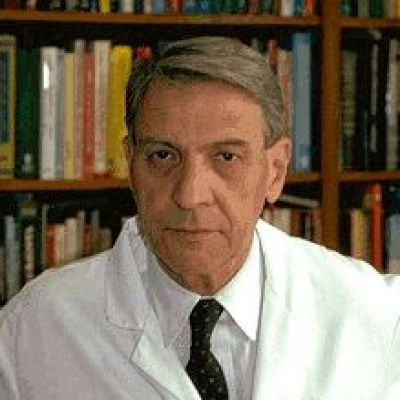
Erich E. Windhager, M.D.
LC-501 A -- 1300 York Ave.
Research Areas
Research Summary:
Studies in our laboratory are aimed at elucidating the mechanisms of salt and water transport by the kidney. Recent work concentrates on the regulation of renal epithelial sodium transport, a mechanism which links the rate of sodium entry across the luminal cell membrane to the rate of sodium extrusion by the Na+-K+ pump across the contraluminal cell boundary.
Luminal Na+ entry occurs via amiloride-sensitive Na+ channels which are regulated, in part, by the intracellular Ca2+ ion concentration. Because of the presence of Na+-Ca2+ exchange in the contraluminal cell membrane, cell Ca2+ rises and falls in parallel with the intracellular Na+ concentration, which in turn depends upon the activity of the Na+-K+ pump in the contraluminal cell membrane. This negative feedback control mechanism prevents the cell swelling or osmotic rupture of the cell that would otherwise occur whenever there is a reduction in the rate of Na+ extrusion via the Na+ pump. The same feedback mechanism responds to stimulation of the Na+-K+ pump by increasing the rate of Na+ entry via the luminal Na channels and thereby assuring an adequate supply of substrate for the Na+-K+ pumps in the contraluminal cell membrane.
In other studies the laboratory has expressed a renal Na+-Ca2+ exchange protein as well as multiple water channel activities in Xenopus laevis oocytes by the injection of mRNA derived from different parts of the mammalian kidney.
Both electrophysiological and molecular biological techniques are currently employed in the laboratory. These methods include patch clamping of surgically exposed apical cell membranes of single cortical collecting tubules of rat and rabbit kidneys and expression cloning of channel and transport proteins present within the mammalian kidney.
the protein-induced bilayer deformation, has an energetic cost
that varies with changes in protein shape and bilayer properties. The free energy difference of a conformational change between protein states I and II
thus will be the sum of contributions from rearrangements within the protein and within
the bilayer . For integral
membrane proteins, with their irregular protein/bilayer boundary, there will be an additional contribution from the inevitable residual exposure of hydrophobic and polar residues .
An extensive literature has demonstrated the regulation of cell and membrane protein function by changes in lipid bilayer composition. This bilayer-mediated regulation of membrane protein function is important because changes in lipid bilayer properties, e.g. due to the partitioning of drugs into the bilayer/solution interface, will alter the and
contributions to , providing a mechanism for the changes in protein function. When such drug-induced changes in the bilayer contributions to
become sufficiently large they produce global effects and, eventually, cytotoxicity.
Current experiments address the following questions:
What are the relation(s) between molecular structure and bilayer-modifying potency; can we predict the changes in bilayer properties (expressed as ) based on a drug’s structure?
Recent publications
Milovanovic, S., Frindt, G., Tate, S., and Windhager, E.E. Expression of renal Na+-Ca2+exchange activity in Xenopus laevis oocytes. Am. J. Physiol. 261: F207-F212, 1991.
Silver, R.B., Frindt, G., Windhager, E.E., and Palmer, L.G. Feedback regulation of Na channels in rat CCT. I. Effect of inhibition of Na pump. Am. J. Physiol. 264: F557-F564, 1993.
Frindt, G., Silver, R.B., Windhager, E.E., and Palmer, L.G. Feedback regulation of Na channels in rat CCT. II. Effect of inhibition of Na entry. Am. J. Physiol. 264: F565-F574, 1993.
Echevarria, M., Windhager E.E., Tate S.S., and Frindt, G. Cloning and expression of AQP3, a water channel from the medullary collecting duct of rat kidney. Proc. Nat. Acad. Sc. USA 91:10997-11001, 1994.
Frindt, G., Silver, R.B., Windhager, E.E., and Palmer, L.G. Feedback regulation of Na channels in rat CCT: III. Response to cAMP. Am. J. Physiol. 268: F480-F489, 1995.
Frindt, G., Palmer, L.G., and Windhager, E.E. Feedback regulation of Na channels in rat CCT. Mediation by activation of PKC. Am. J. Physiol. 270: F371-F376, 1996.
Echevarria, M., Windhager, E.E., and Frindt, G. Selectivity of the renal collecting duct water channel Aquaporin-3. J. Biol. Chem. 271:25079-25082, 1996.

